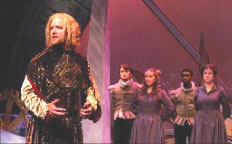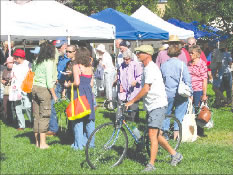By: Susan J. Tweit
Illustrations by: Sherrie York
University of Texas Press, March 2009
ISBN: 978-0-0292-71917-0
Reviewed by Eduardo Rey Brummel
Susan Tweit has been a fixture of Salida for over a decade. Her weekly column in Salida’s Mountain Mail, has been a fixture for nearly as long, and she’s graced the pages of Colorado Central, bunches of times. Now, after writing eleven place-based books, Tweit’s most recent book, Walking Nature Home, is her most intimate, and has the most to say about the place we call “home.”
Walking Nature Home seems to be about Tweit’s struggles with various physical illnesses and ailments, and while it is indeed about that, especially in the earlier chapters, it’s not about only that. Tweit is too polished a professional to write a book with a mere single subject. Also, as John Muir pointed out, whenever we try to pull out any one single thing, we find it hitched to everything else in the universe.
Since “Walking” is a memoir, Tweit is telling her own experiences, and she is her main character.
Over two decades ago, twentysomething Tweit received news from her doctor about lupus that changed everything for her: “You’ve got two years, or maybe five. I’m sorry.” At the time Tweit was, “attending graduate school while working for the U.S. Forest Service, married to my college sweetheart, and at the beginning of what seemed like a promising career. If you had asked me, I would have said I was perfectly happy.”
For most of us, our bodies snap back after we’ve pushed them. Tweit’s just snapped; but her symptoms were neither constant nor consistent. After each long spell of good health, and thinking she’d conquered her lupus, Tweit would step back into old routines only to pay some harsh price: the passing of blood, seizures, flannel-pajama-soaking fevers coupled with unstoppable shivers, and her fingertip being chopped with the carrots going unnoticed until she looked to see why the carrots were glistening with blood.
Eventually, Tweit learned to accommodate her body’s shifty moods and temperaments. She’s far outlasted that two-sentence, five-year mortality given in 1980. She remains so much with us, she’s at work on book thirteen. However, again, while this is a memoir, it isn’t about Susan J. Tweit—it’s actually about all of us. Even though Tweit’s mixed connective tissue disease is real and tangible, I think she also intends it as metaphor.
Is there any among us who need a book to tell us we’re running ourselves ragged, and often for the sake of lives we neither want nor enjoy? Nearly all of us suffer from chronic fatigue, which we aid and abet by continuing to go faster than the speed of life. Using her personal journey, Tweit shows us how to find our place in the world, as well as our pace.
I’d be committing a huge lie of omission if I didn’t mention Sherrie York. It’s her illustrations that grace each chapter’s introduction. They’re much preferred over traditional star charts and photos of the constellations. Further, Sherrie’s illustrations increase the intimacy and personableness of Tweit’s book.
I finished this book in a single day’s time. Maybe I’m rationalizing, but I say it’s due more to the caliber of Tweit’s writing than to my 21st century hyperdrive. Read it yourself, and let me know if I’m wrong.
Eduardo Rey Brummel is a good dozen books behind Susan J. Tweit, but he plans on catching up soon.

